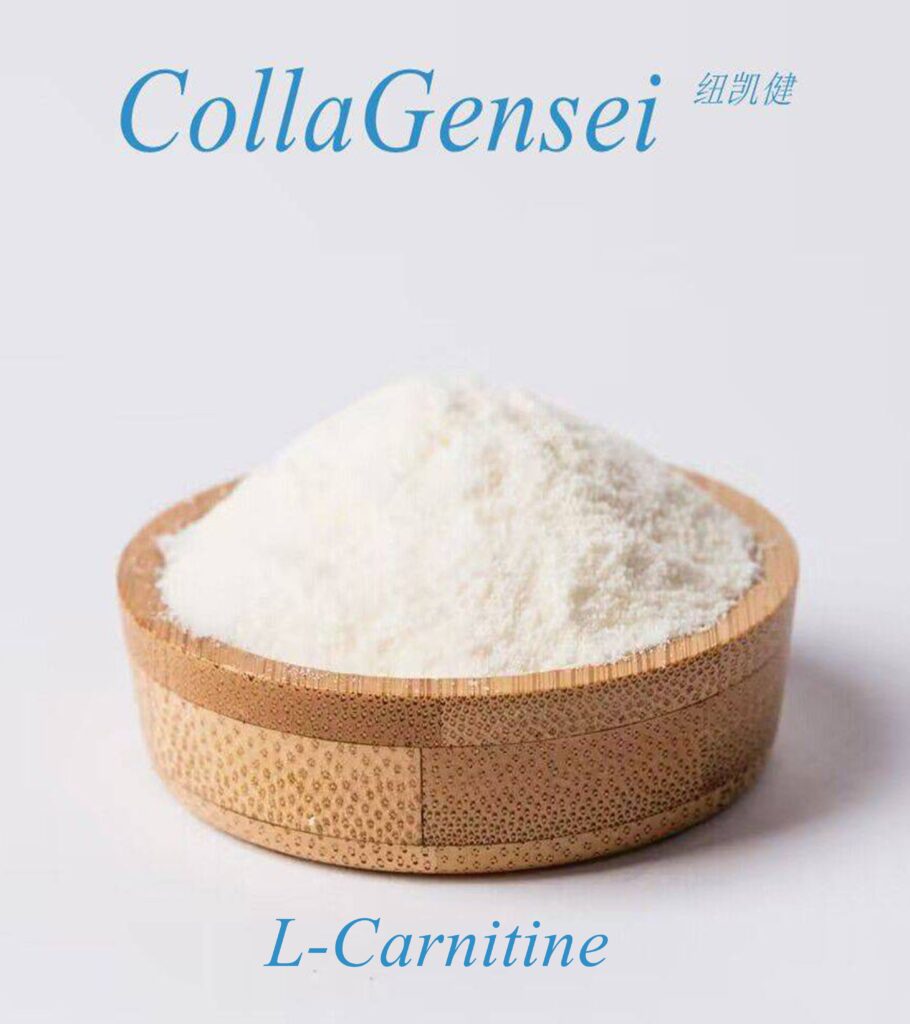The Rise of Vegan Glucosamine: An Essential Ingredient in Health Products
Vegan glucosamine is making a significant splash in the health and wellness industry, appealing to consumers who are increasingly aware of their dietary choices and environmental impact. This plant-based alternative to traditional glucosamine is not only effective but also aligns perfectly with vegan and vegetarian lifestyles. So, what exactly is vegan glucosamine, and how does it stack up against its non-vegan counterparts? In this blog, we’ll explore everything from its production to its benefits, helping B2B businesses understand why they should be paying attention to this ingredient.
What is Vegan Glucosamine?
Starting with the basics, vegan glucosamine is derived from plant sources rather than shellfish, making it a suitable option for those with dietary restrictions. It is commonly found in two primary forms: vegan glucosamine HCl (hydrochloride) and vegan glucosamine sulfate. Both forms offer beneficial properties, but they differ slightly in chemistry and solubility.
- Common Names: Vegan glucosamine, vegan glucosamine sulfate, vegan glucosamine HCl.
- Latin Name: N/A (typically referred to by its functional name).
- CAS Number: Not universally standardized, as formulations may vary.
- Appearance: Usually a white, crystalline powder.
- Taste: Generally tasteless.
- Solubility: Water-soluble, particularly in the HCl form.
- Common Specifications: Typically available in concentrations ranging from 500 mg to 1500 mg per serving.
- Storage Conditions: Cool, dry environment away from direct sunlight.
The Background of Vegan Glucosamine
The need for vegan glucosamine arose from a growing global shift towards vegetarian and vegan diets. Traditional glucosamine is harvested from shellfish, which posed a problem for those avoiding animal products. Research teams and product developers have been exploring plant-based alternatives for years, and advancements in biotechnology enabled the production of glucosamine from fermentation processes using specific plant sugars.
Forms of Vegan Glucosamine on the Market
In the market, vegan glucosamine is typically available as a powder or capsule, making it easy for consumers to incorporate into their daily routines. The powder form can be mixed into smoothies, juices, or even water, while capsules offer convenience for on-the-go lifestyles.
- Vegan Glucosamine HCl: Often used for its solubility in water, making it easier for the body to absorb.
- Vegan Glucosamine Sulfate: Achieved through a similar production process but may have additional benefits related to joint health due to its sulfate component.
Production Process: How Is Vegan Glucosamine Made?
The production of vegan glucosamine involves a few steps, typically centering around fermentation:
- Fermentation: The process begins with plant-based sugars derived from corn, potatoes, or other starches. These sugars are fermented using specific microorganisms that convert them into glucosamine.
- Purification: After fermentation, the resulting glucosamine is purified to ensure it meets strict quality and safety standards. This involves removing impurities and ensuring the final product is free from contaminants.
- Formulation: The purified glucosamine is then packaged either as a powder or encapsulated into tablets or softgels, ready for distribution.
Benefits of Vegan Glucosamine
Vegan glucosamine is loaded with potential benefits that can enhance joint health and mobility. Here’s a closer look at some of the most well-known benefits:
- Supports Joint Health: Like its non-vegan counterpart, vegan glucosamine is widely recognized for promoting joint health. It helps maintain the integrity of cartilage and may alleviate symptoms associated with osteoarthritis.
- Anti-Inflammatory Properties: Glucosamine has natural anti-inflammatory properties, making it beneficial for people suffering from chronic joint pain.
- Better Absorption: Some studies suggest that the HCl form of glucosamine may be better absorbed in the small intestine compared to sulfate forms, potentially delivering quicker relief.
- Vegan-Friendly: The obvious benefit here is that it caters to individuals following a vegan or vegetarian lifestyle without sacrificing efficacy.
- Supports Overall Mobility: Regular use of vegan glucosamine can lead to improved flexibility and range of motion, a key advantage for athletes and active individuals.
Are There Any Side Effects?
As with any supplement, it’s important to consider potential side effects. Vegan glucosamine is generally well tolerated, but some individuals may experience mild gastrointestinal issues such as bloating or gas. As with any supplement, it is recommended to consult a healthcare provider before starting any new regimen, especially for those with pre-existing health conditions or those taking other medications.
Mechanism of Action: How Vegan Glucosamine Works in the Body
The action of glucosamine in the body revolves around its role in synthesizing glycosaminoglycans (GAGs), which are essential components of cartilage. By aiding in the formation of these molecules, glucosamine helps to repair and maintain healthy cartilage, which supports joint function and reduces pain associated with wear and tear.
Vegan Glucosamine and Clinical Research
The past few years have seen the emergence of clinical studies investigating the effectiveness of vegan glucosamine. Research indicates that it performs comparably to traditional glucosamine, with some studies suggesting potential enhanced efficacy due to better absorption rates in some formulations. For businesses considering vegan glucosamine, referencing these studies in marketing materials could bolster credibility and consumer confidence.
Regulatory Landscape
The regulatory status of vegan glucosamine varies from country to country. In the United States, it is typically classified as a dietary supplement, subject to the FDA’s regulations on dietary ingredients. In Europe, similar regulations apply, but there may be stricter guidelines on labelling and health claims. It’s essential for businesses to stay informed about the regulatory environment related to vegan glucosamine in their respective markets.
Market Outlook for Vegan Glucosamine
The vegan glucosamine market is showing promising growth trends, propelled by consumer demand for plant-based products and dietary supplements. Recent estimates project a significant increase in market size over the next few years, particularly in regions with high concentrations of health-conscious consumers, such as North America and Europe.
Moreover, as the global trend towards plant-based diets strengthens, vegan glucosamine stands poised to capture a larger segment of the glucosamine market. It is projected that the vegan supplement market, including vegan glucosamine, could see an annual growth rate exceeding 5% as consumer preferences shift.
FAQ: Addressing Common Questions
- What forms does vegan glucosamine come in?
- It is typically available in powder or capsule form.
- How do I know if vegan glucosamine is effective?
- Look for products that reference clinical studies and have third-party validation for their efficacy.
- Can vegan glucosamine cause allergies?
- Though rare, always check the source and production standards if allergies are a concern.
- What is the recommended dosage for vegan glucosamine?
- Common dosages range from 500 mg to 1500 mg per day, but it’s best to follow specific product guidelines or consult a healthcare provider.
- How quickly can I expect results from taking vegan glucosamine?
- Users may see improvements in joint pain and flexibility within a few weeks to a few months of consistent use.
Choosing the Right Supplier for Vegan Glucosamine
For businesses looking to source high-quality vegan glucosamine, here are a few tips to consider when selecting suppliers:
- Evaluate Certifications: Ensure suppliers have necessary certifications such as ISO, GMP, and third-party testing to guarantee product quality.
- Transparency: A reputable supplier should be willing to disclose their supply chain and manufacturing processes.
- Sample Products: Always ask for samples to assess quality before making larger purchases.
- Market Feedback: Look for suppliers with positive reviews from other businesses in your industry.
Conclusion
Vegan glucosamine is not just a trending ingredient; it’s a game-changer for many consumers seeking effective, plant-based alternatives for joint health. With its numerous benefits and growing market demand, it provides companies with a unique opportunity to cater to health-conscious consumers looking for vegan-friendly options.
Which works better of Vegan Glucosamine and traditional Glucosamine?
Are Vegan Glucosamine and traditional Glucosamine equally effective for joint pain relief?
Are Vegan Glucosamine and traditional Glucosamine similarly priced?
Are Vegan Glucosamine and traditional Glucosamine both effective for improving joint flexibility?
Are Vegan Glucosamine and traditional Glucosamine equally beneficial for cartilage health?
Are Vegan Glucosamine and traditional Glucosamine both suitable for individuals with shellfish allergies?
Are Vegan Glucosamine and traditional Glucosamine equally effective for reducing inflammation?
Are Vegan Glucosamine and traditional Glucosamine both easily absorbed by the body?
Are Vegan Glucosamine and traditional Glucosamine equally effective for supporting overall joint health?
Are Vegan Glucosamine and traditional Glucosamine both suitable for individuals following a plant-based diet?
Are Vegan Glucosamine and traditional Glucosamine equally beneficial for long-term joint maintenance and protection?
If you’re interested in sourcing reliable vegan glucosamine raw materials, look no further. At Gensei Global Industries, we are an FDA-certified manufacturer offering a broad range of high-quality ingredients, including vegan glucosamine. With ISO, HALAL, KOSHER, and MSC certifications, you can trust our products to meet your specific needs. Reach out to us at sales@collagensei.com for more information on our offerings and how we can support your business. We provide a one-stop service, from raw material sourcing to custom formulation, ensuring you receive top-notch products tailored to your requirements.




